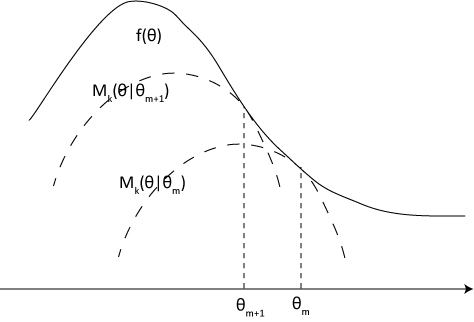 | ||
The MM algorithm is an iterative optimization method which exploits the convexity of a function in order to find their maxima or minima. The MM stands for “Majorize-Minimization” or “Minorize-Maximization”, depending on whether the desired optimization is a maximization or a minimization. MM itself is not an algorithm, but a description of how to construct an optimization algorithm.
Contents
The EM algorithm can be treated as a special case of the MM algorithm. However, in the EM algorithm conditional expectations are usually involved, while in the MM algorithm convexity and inequalities are the main focus, and it is easier to understand and apply in most cases.
History
The historical basis for the MM algorithm can be dated back to at least 1970, when Ortega and Rheinboldt were performing studies related to line search methods. The same concept continued to reappear in different areas in different forms. In 2000, Hunter and Lange put forth "MM" as a general framework. Recent studies have applied the method in a wide range of subject areas, such as mathematics, statistics, machine learning and engineering.
Algorithm
The MM algorithm works by finding a surrogate function that minorizes or majorizes the objective function. Optimizing the surrogate function will drive the objective function upward or downward until a local optimum is reached.
Taking the minorize-maximization version, let
Then, maximize
The above iterative method will guarantee that
The marching of
Majorize-Minimization is the same procedure but with a convex objective to be minimised.
Constructing the surrogate function
One can use any inequality to construct the desired majorized/minorized version of the objective function. Typical choices include
